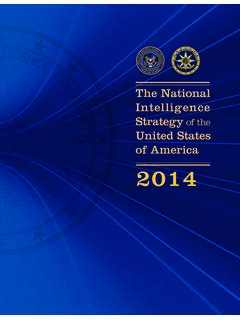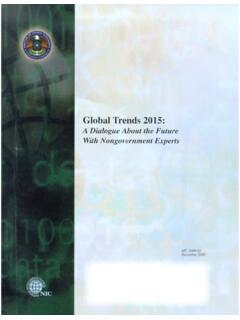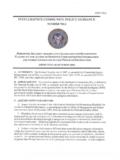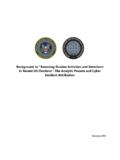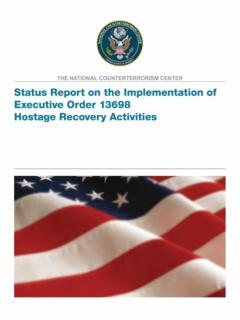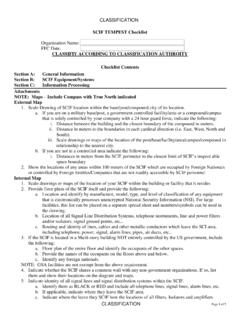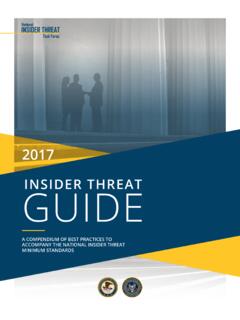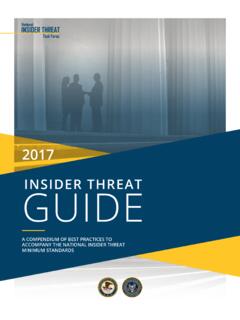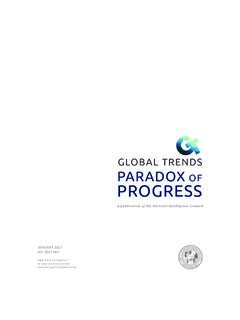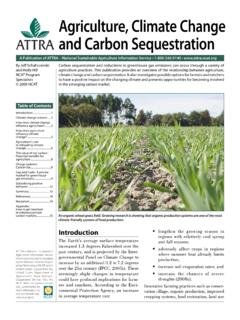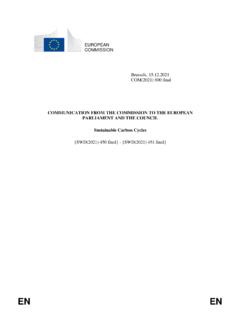Transcription of Updated Assessment on COVID-19 Origins
1 [ 1 ] Updated Assessment on COVID-19 Origins Key Takeaways Scope Note: This Assessment responds to the President s request that the Intelligence Community (IC) update its previous judgments on the Origins of COVID-19 . It also identifies areas for possible additional research. Annexes include a lexicon, additional details on methodology, and comments from outside experts. This Assessment is based on information through August 2021. The IC assesses that SARS-CoV-2, the virus that causes COVID-19 , probably emerged and infected humans through an initial small-scale exposure that occurred no later than November 2019 with the first known cluster of COVID-19 cases arising in Wuhan, China in December 2019.
2 In addition, the IC was able to reach broad agreement on several other key issues. We judge the virus was not developed as a biological weapon. Most agencies also assess with low confidence that SARS-CoV-2 probably was not genetically engineered; however, two agencies believe there was not sufficient evidence to make an Assessment either way. Finally, the IC assesses China s officials did not have foreknowledge of the virus before the initial outbreak of COVID-19 emerged. After examining all available intelligence reporting and other information, though, the IC remains divided on the most likely origin of COVID-19 .
3 All agencies assess that two hypotheses are plausible: natural exposure to an infected animal and a laboratory-associated incident. Four IC elements and the National Intelligence Council assess with low confidence that the initial SARS-CoV-2 infection was most likely caused by natural exposure to an animal infected with it or a close progenitor virus a virus that probably would be more than 99 percent similar to SARS-CoV-2. These analysts give weight to China s officials lack of foreknowledge, the numerous vectors for natural exposure, and other factors. One IC element assesses with moderate confidence that the first human infection with SARS-CoV-2 most likely was the result of a laboratory-associated incident, probably involving experimentation, animal handling, or sampling by the Wuhan Institute of Virology.
4 These analysts give weight to the inherently risky nature of work on coronaviruses. Analysts at three IC elements remain unable to coalesce around either explanation without additional information, with some analysts favoring natural origin, others a laboratory origin, and some seeing the hypotheses as equally likely. Variations in analytic views largely stem from differences in how agencies weigh intelligence reporting and scientific publications and intelligence and scientific gaps. The IC judges they will be unable to provide a more definitive explanation for the origin of COVID-19 unless new information allows them to determine the specific pathway for initial natural contact with an animal or to determine that a laboratory in Wuhan was handling SARS-CoV-2 or a close progenitor virus before COVID-19 emerged.
5 The IC and the global scientific community lacks clinical samples or a complete understanding of epidemiological data from the earliest COVID-19 cases. If we obtain information on the earliest cases that identified a location of interest or occupational exposure, it may alter our evaluation of hypotheses. [ 2 ] China s cooperation most likely would be needed to reach a conclusive Assessment of the Origins of COVID-19 . Beijing, however, continues to hinder the global investigation, resist sharing information, and blame other countries, including the United States. These actions reflect, in part, China s government s own uncertainty about where an investigation could lead as well as its frustration the international community is using the issue to exert political pressure on China.
6 [ 3 ] [ 4 ] Introduction The IC has prepared several assessments examining the Origins of COVID-19 . Analysts have focused on whether SARS-CoV-2, the causative virus of COVID-19 , was genetically engineered particularly as a biological weapon was transmitted to humans naturally or transmitted due to a laboratory-associated incident, perhaps during sampling or experimentation. China s reaction to and handling of the pandemic have given analysts insights into these issues, but Beijing s actions have also impeded the global scientific community and our ability to confidently determine how the virus first infected humans.
7 SARS-CoV-2 Probably Not a Biological Weapon The IC assesses China did not develop SARS-CoV-2 as a biological weapon. We remain skeptical of allegations that SARS-CoV-2 was a biological weapon because they are supported by scientifically invalid claims, their proponents do not have direct access to the Wuhan Institute of Virology (WIV), or their proponents are suspected of spreading disinformation. [See appendix B.] Most Analysts Assess SARS-CoV-2 Not Genetically Engineered Most IC analysts assess with low confidence that SARS-CoV-2 was not genetically engineered. Their Assessment is based on technical analysis of SARS-CoV-2 and the IC s growing understanding of traits and the potential for recombination in other coronaviruses.
8 Two agencies believe there is not sufficient evidence to make an Assessment either way. As of August 2021, we still have not observed genetic signatures in SARS-CoV-2 that would be diagnostic of genetic engineering, according to the IC s understanding of the virus. Similarly, we have not identified any existing coronavirus strains that could have plausibly served as a backbone if SARS-CoV-2 had been genetically engineered. Our growing understanding of the similarities of SARS-CoV-2 to other coronaviruses in nature and the ability of betacoronaviruses the genus to which SARS-CoV-2 belongs to naturally recombine suggests SARS-CoV-2 was not genetically engineered.
9 For instance, academic literature has noted that in some instances betacoronaviruses have recombined with other viruses in nature and that furin cleavage sites (FCS) a region in the spike protein that enhances infection have been identified in naturally occurring coronaviruses in the same genetic location as the FCS in SARS-CoV-2. This suggests that SARS-CoV-2 or a progenitor virus could have acquired its FCS through natural recombination with another virus. IC analysts do not have higher confidence that SARS-CoV-2 was not genetically engineered because some genetic engineering techniques can make modifications difficult to identify and we have gaps in our knowledge of naturally occurring coronaviruses.
10 Some genetic engineering techniques may make genetically modified viruses indistinguishable from natural viruses, according to academic journal articles. For instance, a 2017 dissertation by a WIV student showed that reverse genetic cloning techniques which are standard techniques used in advanced molecular laboratories left no trace of genetic modification of SARS-like coronaviruses. It will be difficult to increase our confidence that the distinguishing features in SARS-CoV-2 emerged naturally without a better understanding of the diversity of coronaviruses in nature and how often recombination occurs during co-infection of multiple coronaviruses within a particular host.
